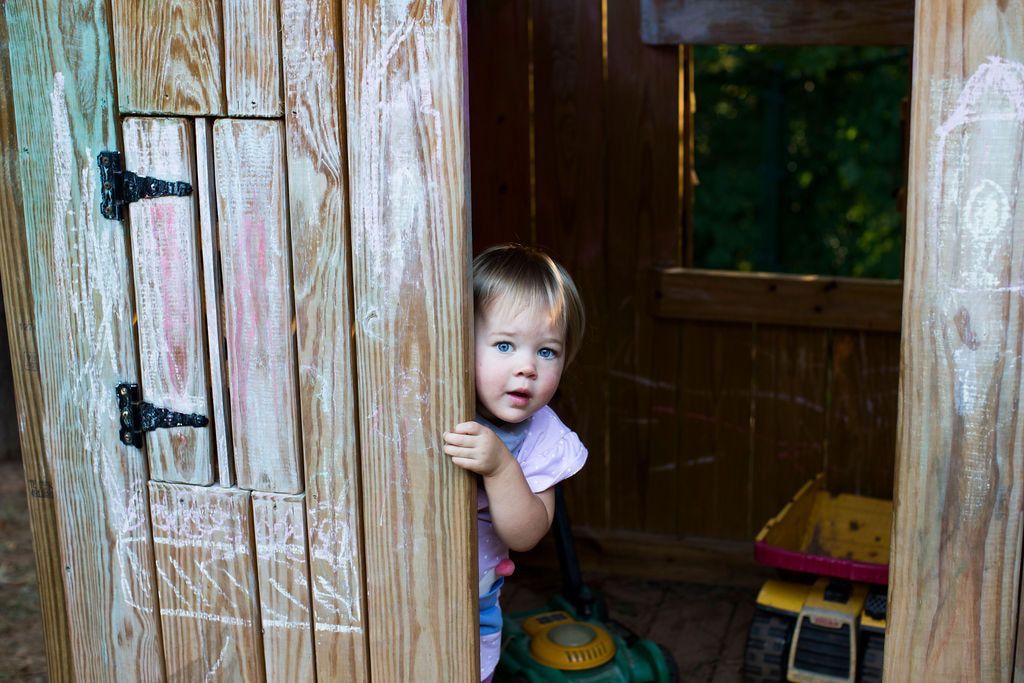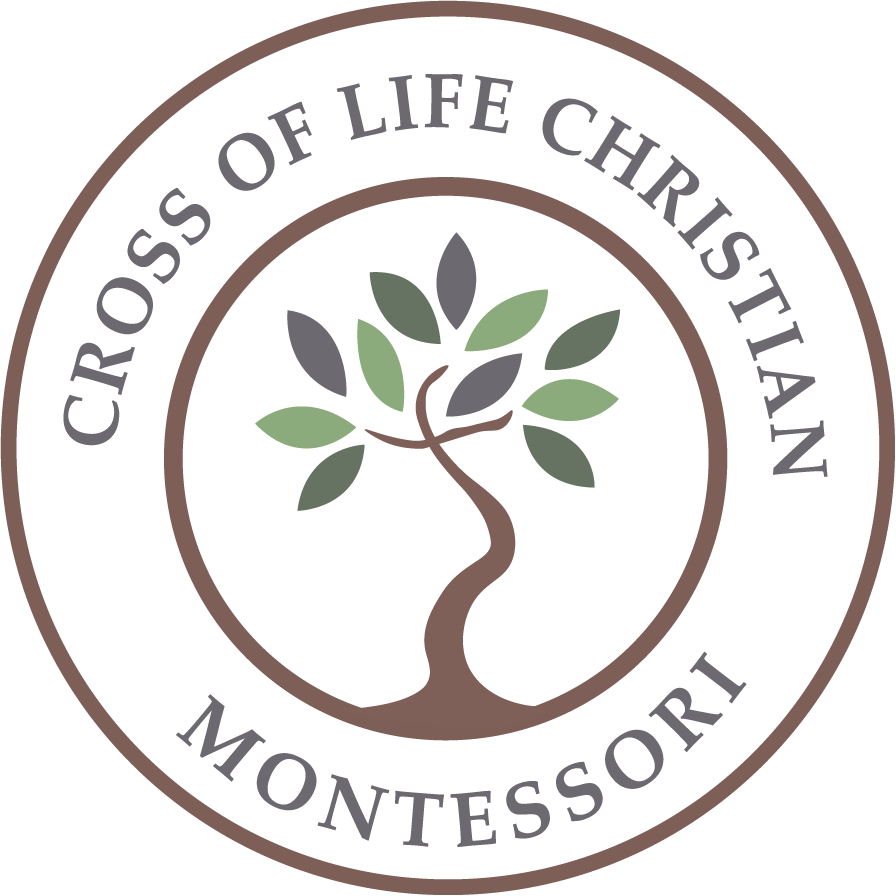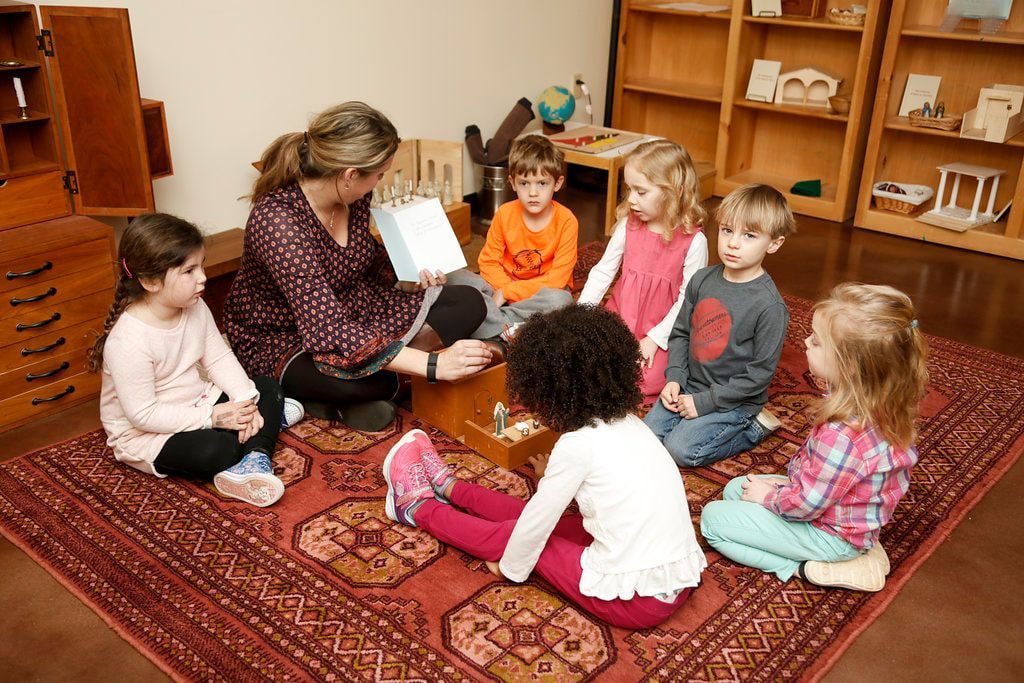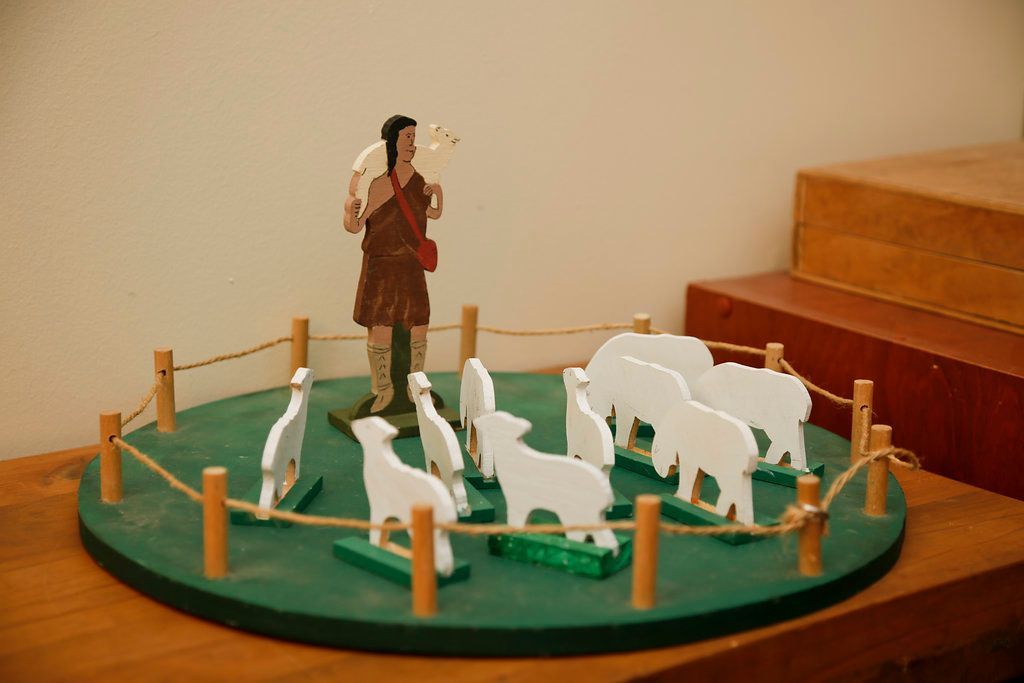
Shout for joy to the Lord, all the earth.
Worship the Lord with gladness;
Come before the Lord with joyful songs.
-Psalm 100 1-2
Cross of Life Montessori is one of the few Montessori schools to use the Catechesis of the Good Shepherd (CGS) curriculum. The materials for the CGS work are kept in a special place called 'The Atrium,' which is where the children are invited into a loving relationship with God.
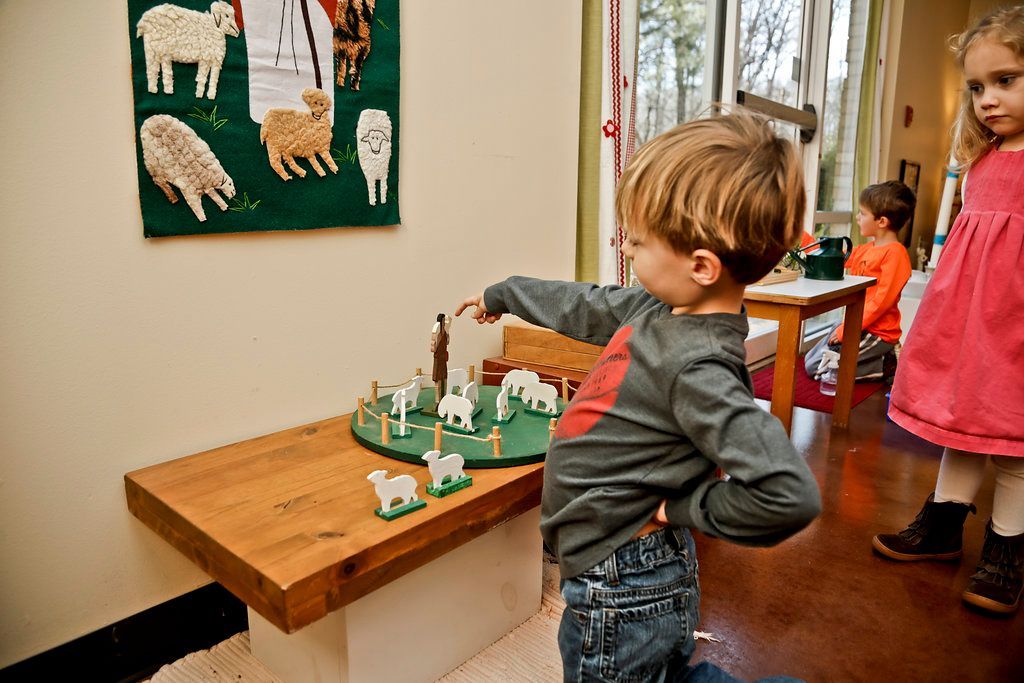
Here, children can experience God as love. Between the ages of three and six years, the child's capacity for prayer is that of praise and thanksgiving. Children learn that there are many ways to pray, including silence and singing. In the silence is where we can learn to hear God. This silence is nourished, not enforced during the child's time in the atrium.
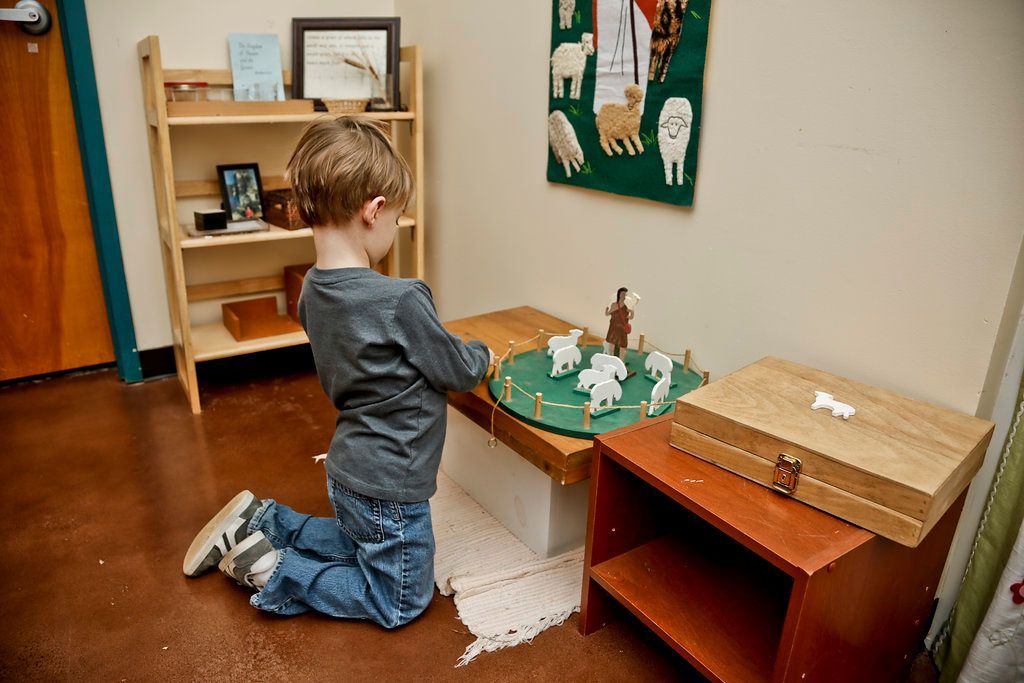
Children in the Primary class enter the Atrium in small groups. Similar to the way a new presentation is given with the Montessori teaching materials, the Catechist (teacher) introduces a scripture passage and a corresponding material. The child pictured above is working with the Good Shepherd material. Previously, the Catechist read the parable and paused in her reading to act out the story with the sheep and the shepherd.
After the scripture reading, the children talk about questions such as 'What does the good shepherd do?' 'Why won't the sheep follow a stranger's voice?' or 'What does it mean that he knows all their names?'
It's ok if the children don't know or don't want to talk about the answers. This is a time to wonder and reflect on the mystery of God. In asking reflection questions about the materials, we become aware of the child's capacity to understand and we respect his response.
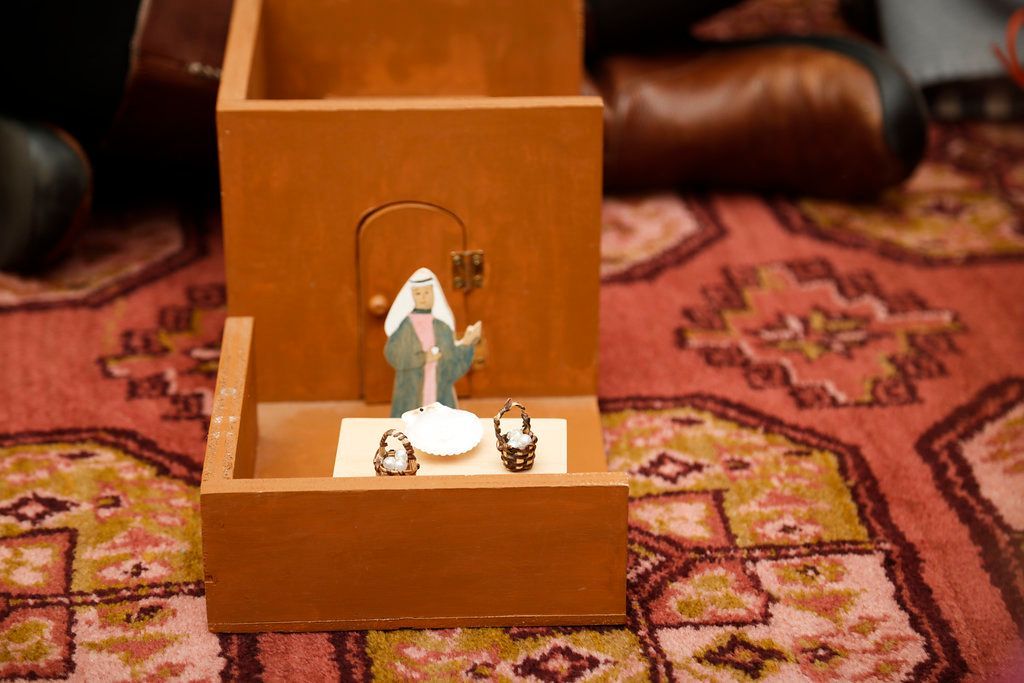
The Parable 'The Kingdom of Heaven and the Pearl of Great Price' is pictured here. After reading the scripture booklet and acting out the story, the children are free to work with other materials in the atrium.
The three and a half year old girl pictured here is working with the material to re-tell the story of the pearl. The beautiful and simple materials provide an outlet for the child to process and begin to understand the wonderful stories in the bible.
The children in the Atrium are given a simple, limited amount of material to work with. This way, they are not overwhelmed and can begin to generalize the lessons learned to other areas of their lives. Sophia Cavaletti, on of the co-founders of CGS said 'The youngest children are capable of the greatest love.'
The children above, ages 4 and 6 are pictured reflecting quietly at the prayer table. God and children are already in a relationship - the work with the Catechesis of the Good Shepherd materials simply affirms what they already know. As one of our parents said, 'Children show you the simple things God wants you to see.'
It is our hope at COLM that by nurturing the children's faith through joyful and loving experiences, this faith will stay with them for a lifetime, leading them to many years of happiness, service, fulfillment, and peace.
The girl pictured here, age 4, is working with the Adoration of the Magi.
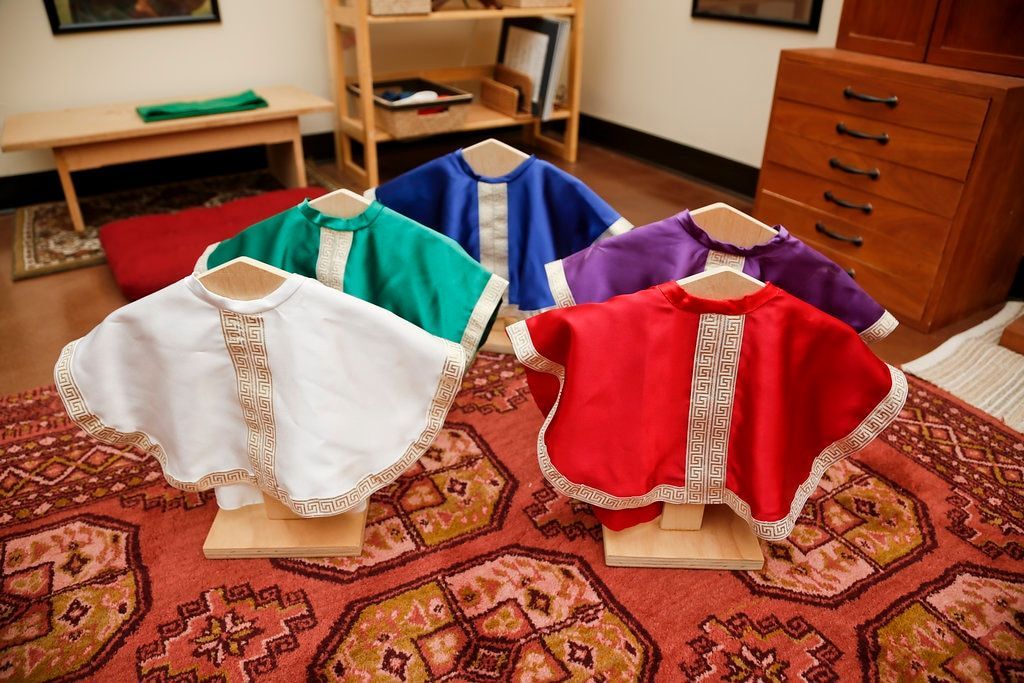
The children use these specially made linens to learn about the colors of the liturgical seasons.

The material above is for the Last Supper.
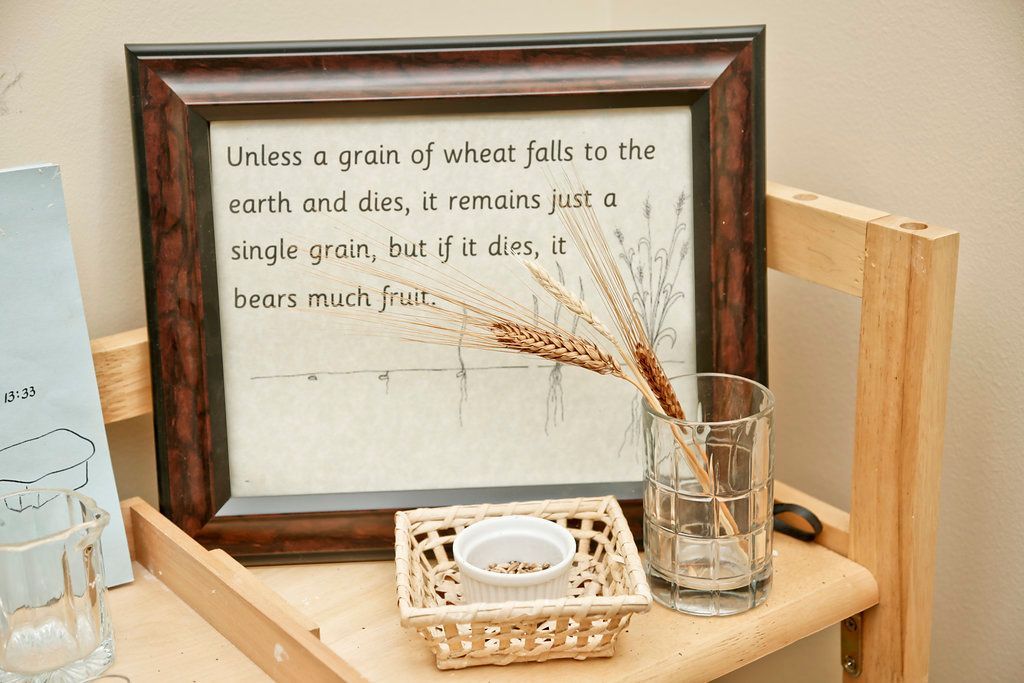
These materials give the children a way to process ideas that are even difficult for adults to understand. With the 'Mystery of Life and Death' (pictured above), we plant seeds and talk about how they change as they grow into plants.
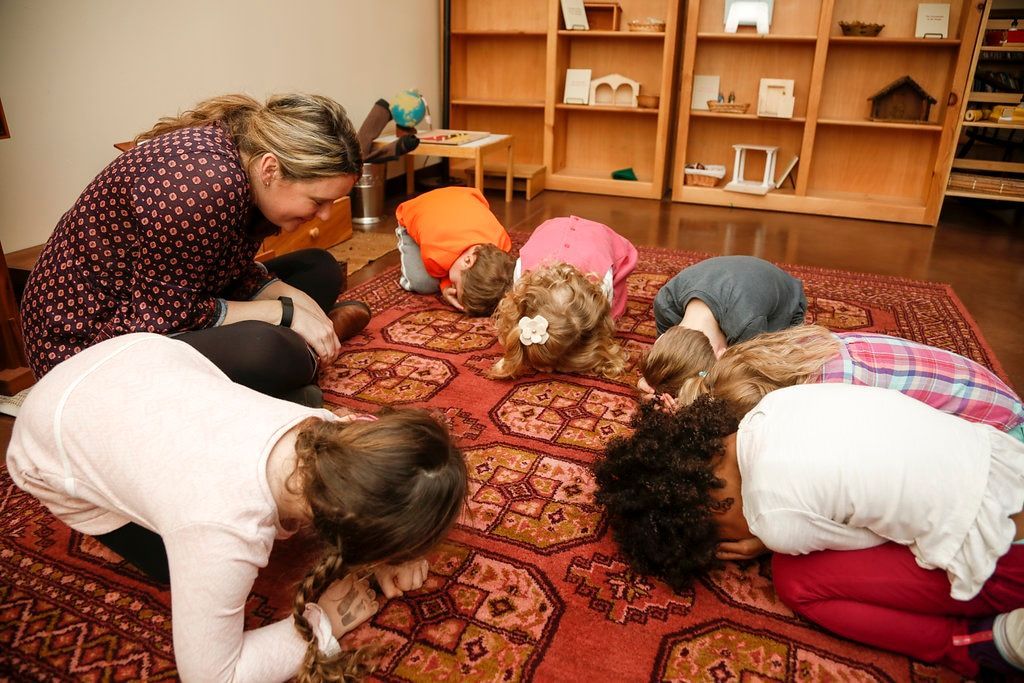
On this day, we finished our time in the Atrium by acting out the song of the Mustard Seed. It goes like this:
'The mustard seed is very small
Until it starts to grow
Then inch by inch it reaches up
So all of us will know'
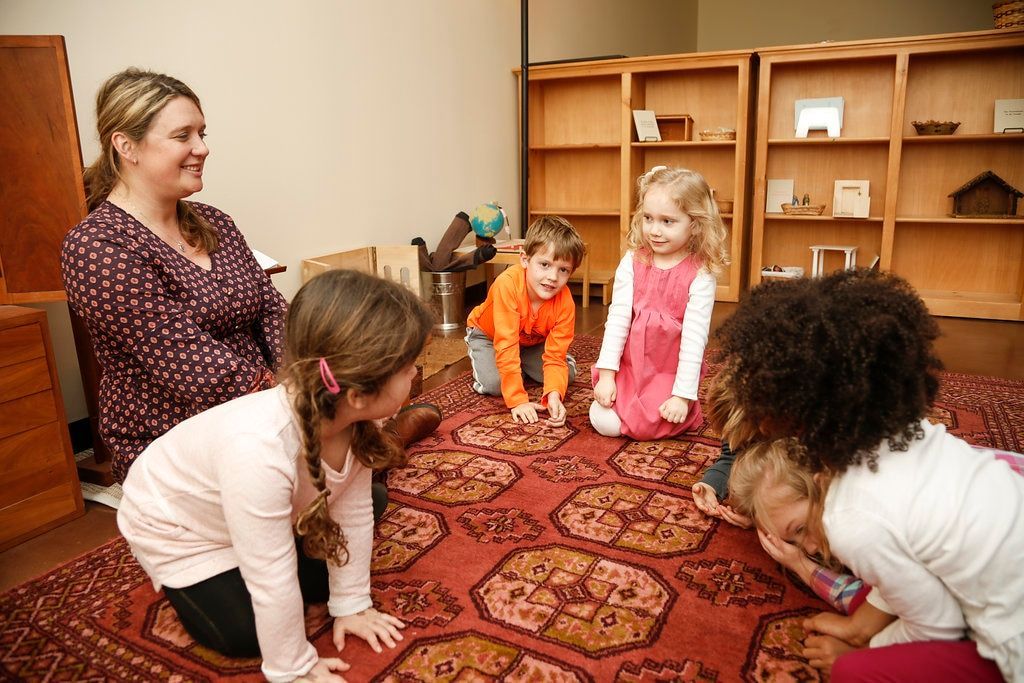
'That even though we're little now
One day we're going to be
Big and strong and full of power
Just like the mustard seed'
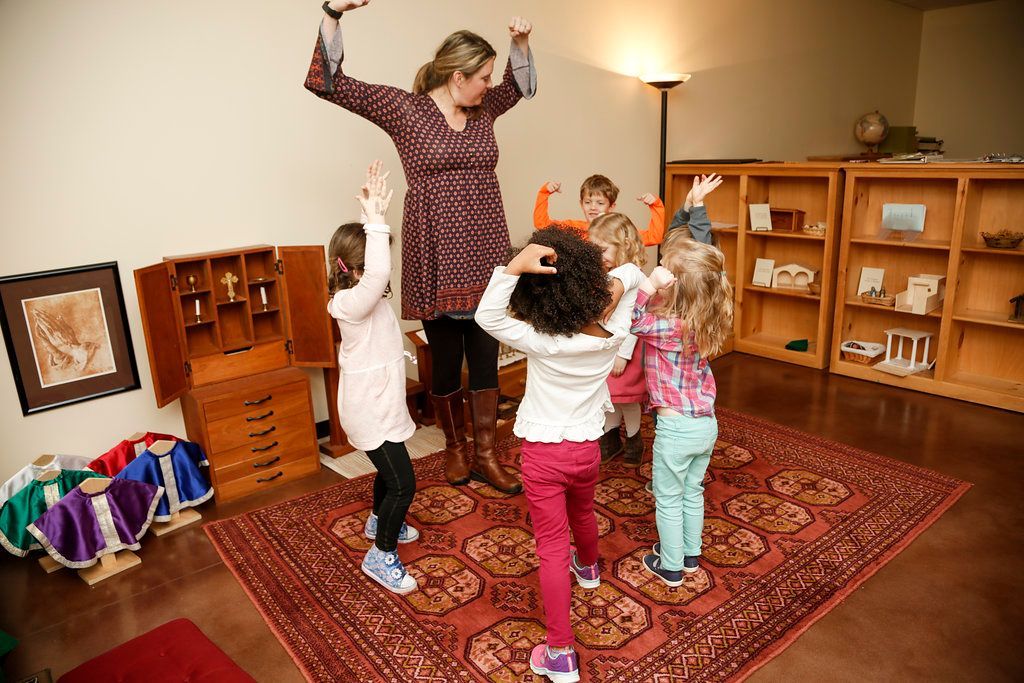
'Can you believe the power of God?!'

Many thanks to Meg Porter of Meg Porter Photography and Meg and Kate Weddings
for the images in this post. We so appreciate Meg sharing her talent with us!
